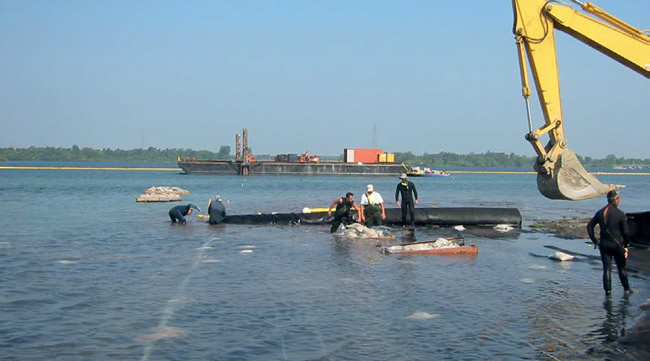Jim Olsta is a veteran presence in the geosynthetics field, particularly in regards to barrier solutions that utilize clays (e.g., geosynthetic clay liners). He has also carved out a strong reputation as a consensus builder with ASTM International committees, and those years of work will be recognized this June. During the ASTM D18 Committee on Soil and Rock meetings in San Diego, California, Jim Olsta will be honored with the Richard S. Ladd Standards Development Award.
Olsta has worked in geosynthetics for 25+ years. With HUESKER, Inc., he provides the company’s barrier systems client base with engineering services and recommends best practices and associated products in environmental markets.

With ASTM International, Olsta has given his time to help Committee D18 develop D8106 – 17, Standard Test Methods for Determining the Oil Sorption Capacity of Organophilic Clay. The index test was hailed in October 2017 by ASTM as a benefit to the environment and to manufacturers and consultants.
JIM OLSTA & STANDARD D8106
With the new standard D8106, organophilic clays can be tested for use in environmental remediation projects involving groundwater, soil, and sediment. Potentially harmful substances can stick to surface of these types of clays, helping filter out the contaminants. For manufacturers, the index test methods described in the standard will enhance quality control. For consultants, the standard will help more accurately specify products with organophilic clays, which will help achieve the environmental goals in many remediation works.
“When Jim Olsta joined the HUESKER, Inc. team in September of 2016, I knew we would continue raising the bar on our industry’s standards,” said Sven Schröer, HUESKER, Inc. CEO in a statement on Olsta’s achievement. “I’m proud of HUESKER, Inc. and Jim’s dedicated and extensive efforts in the development of ASTM Standard D8106.”
Jim Olsta has previously been honored by ASTM with a standards development award from Committee D35 on Geosynthetics (2002) and an outstanding paper award by Committee S03 on publications for his geotechnical testing writing (2008).

Organophilic clays can be used in a wide range of environmental remediation works, including with or along waterways, capping contaminated soils, as a barrier beneath railroad tracks, and more. Photo by HUESKER.
The Richard S. Ladd Standards Development Award will be presented on 25 June 2018 at Committee D18’s main meeting.
Learn more about environmental remediation, barrier systems, other geosynthetics, and affiliated engineering services at HUESKER’s website, www.huesker.us.












